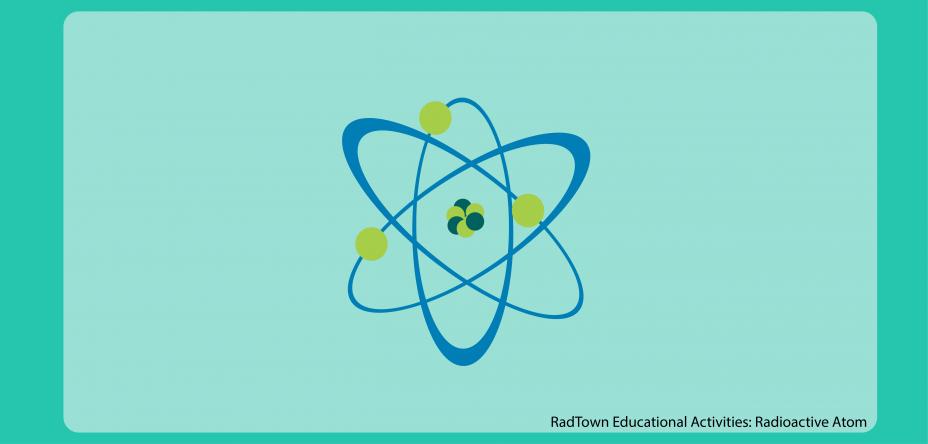In 1913, Ernest Rutherford tested the accepted model of the atom, and found that the atom was different than everyone had previously thought. Using classroom materials, students can simulate the setup of Rutherford’s experiment and recreate his experiment. This activity is intended for middle and high school students.
- Objectives
- Next Generation Science Standards
- Materials and Resources
- Time
- Directions
- Common Core State Standards
- Printable Worksheets and Classroom Aids
Objectives
Students will:
- Simulate Ernest Rutherford’s Gold Foil Experiment.
- Explain how the Rutherford-Bohr Theory of Atomic Structure helps provide us with a basic understanding of atomic structure.
NOTE: This activity serves as an introduction to atomic structure and does not address radiation or radioactive elements.
Next Generation Science Standards
The concepts in this activity can be used to support the following science standard:
- PS1. Structure and Properties of Matter
Materials and Resources
Each italicized document title can be found at the bottom of this page, and is available for printing and distribution.
- The Radioactive Atom: Teacher Background Information
- Vocabulary Materials
- The Smallest Matter Worksheet (one per student, pair or group) and The Smallest Matter: Teacher Answer Key
- Objects to simulate the gold foil experiment (enough for a class or group demonstrations)
- Solid object to represent the detecting screen (e.g., thin metal sheet, cardboard or books)
- Small solid objects to represent the protons within the nucleus of gold atoms (e.g., small gravels or rocks that have a flat bottom to keep them in place)
- Marbles, ping pong balls or other small balls to represent alpha particles being shot through the gold foil
- Online video of the gold foil experiment (optional). Sources may include TeacherTube or other allowed Internet sources
Time
45-60 minutes, not including optional activities or extensions.
Vocabulary
- Alpha particle
- Atom
- Electron
- Neutron
- Nucleus
- Proton
Directions
- Start with a vocabulary activity if students are not familiar with radiation and the terms used in this activity, or provide students with the terms and definitions.
- Ask students to explain or hypothesize:
- How we know about the existence of atoms and their structure. Ancient Greeks were the first to believe that all matter in the universe must be made of tiny building blocks — or atoms. Early scientists started forming theories about, and conducting experiments to confirm, the existence and structure of atoms.
- Whether we know everything about atoms. Beginning with early science scholars throughout history and into this century, scientists strive to learn more about the atom and how to control it. For example, scientists are exploring how to use nuclear fusion — the joining of lighter nuclei to create a larger one — to generate power.
- Provide students with a copy of The Smallest Matter Worksheet. Explain that Ernest Rutherford and Niels Bohr were among those early scientists who wanted to know more about atoms. They formed their model after Rutherford conducted a gold foil experiment (described in the The Radioactive Atom: Teacher Background Information).
- Have students work in pairs or small groups to simulate Rutherford’s gold foil experiment and to answer the questions on The Smallest Matter Worksheet. You can also search online and show students an image, simulation or video of Rutherford’s gold foil experiment when conducting this activity. NOTE: You may want have students answer question 1 on The Smallest Matter Worksheet first.
- Conclude by asking students how the Rutherford-Bohr Theory of Atomic Structure Model helps us understand atomic structure today. The theory provides us with the understanding that an atom has a dense, positively-charged nucleus and that electrons orbit around the nucleus.
- Optional activity or extension: Direct students to:
- Examine other historical atomic models, compare them with our current understanding of atomic structure and analyze how our understanding of atomic structure has evolved over time.
- Explore or diagram the atomic structure of different elements.
- Examine Rutherford and Bohr’s other discoveries related to atomic theory and radioactivity.
Common Core State Standards (CCSS)
The concepts in the Atomic Discoveries activity align with the following:
CCSS English Language Arts Standards for Literacy in History/Social Studies, Science, & Technical Subjects:
- CCSS.ELA-LITERACY.SL6-12.1 Comprehension and Collaboration
- CCSS.ELA-LITERACY.SL6-12.4 Presentation of Knowledge and Ideas
- CCSS.ELA-LITERACY.SL6-12.5 Presentation of Knowledge and Ideas
- CCSS.ELA-WHST.SL6-12.1 Text Types and Purposes
Printable Worksheets and Classroom Aids
You may need a PDF reader to view some of the files on this page. See EPA’s About PDF page to learn more.- The Smallest Matter Worksheet (PDF)(2 pp, 260 K)
- The Smallest Matter: Teacher Answer Key (PDF)(1 pg, 95 K)

